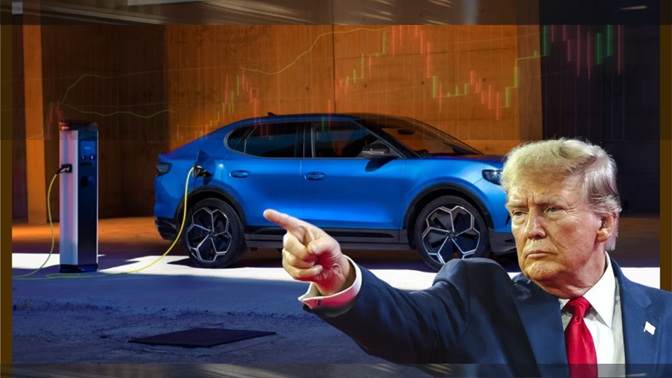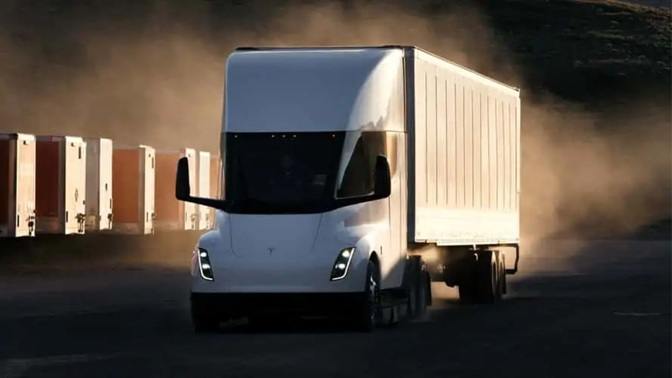Automotive Tariffs Chaos, Tesla’s Truck Push, and a Factory Revolution: What’s Really Happening in the Auto World
The auto industry right now feels like a high-stakes game of dodgeball, with automakers ducking left and right as new tariffs fly in from Washington. Just when it seemed like things couldn’t get more unpredictable, the Trump administration is trying to soften the blow with some last-minute relief. But is it a fix—or just a Band-Aid?

Meanwhile, Tesla’s Semi truck is finally inching closer to reality after years of hype, and a small company called Slate might have cracked the code for truly affordable EV manufacturing in America. Let’s break it all down.
Trump Offers Relief… After Causing the Damage
Let’s start with the big headline: President Trump is offering temporary relief to automakers struggling with massive new tariffs—tariffs his administration introduced in the first place.
In an announcement timed just days before a key May 3rd deadline, the administration revealed it would tweak the tariff policy to reduce the pain automakers are feeling. According to the Wall Street Journal, this includes:
- Avoiding tariff stacking: Automakers won’t have to pay tariffs on top of other tariffs (like steel and aluminum).
- Retroactive reimbursements: Companies could get money back on tariffs they’ve already paid.
- Tariff relief on parts: The new 25% tariff on foreign auto parts will now be partially refunded for up to two years.
In simple terms, let’s say a U.S.-built car costs $30,000. In the first year, a manufacturer could get up to $1,125 back in parts tariffs (roughly covering $4,500 worth of foreign parts). In year two, the refund shrinks to $750.
Commerce Secretary Howard Lutnick called it a “major victory” for domestic automaking. The goal, of course, is to push companies toward more U.S.-based production. But let’s be honest—automakers have been asking for time to adjust for months. Uprooting global supply chains built over decades doesn’t happen overnight.
Ford CEO Jim Farley welcomed the changes, even though he previously criticized the chaotic nature of the policies. He’s not wrong. The average automaker operates on a slim 6.2% profit margin, so every extra fee matters. If domestic production costs more, expect those costs to be passed on to buyers.
Slate: The Anti-Gigafactory That Might Just Work
Now let’s talk about Slate—a little-known EV startup doing something radically different. Most new EV makers go the Gigafactory route, building massive, high-tech facilities that crank out premium electric cars. Not Slate. They’re going small, simple, and smart. Think of it as the anti-Gigafactory: a scaled-back production plant focused on cutting costs without cutting corners.
Slate’s secret sauce? Plastic and simplicity.
- No paint shop: Paint facilities are expensive—sometimes costing hundreds of millions. Slate skips that entirely by molding plastic body panels in pre-colored material.
- Minimal configuration: There’s one model, one configuration, and one color. Don’t like it? Move on.
- Optional features: Speakers, extra batteries, and even turning it into an SUV are all add-ons.
The frame is still metal (for safety and repairability), but it’s a far cry from the ultra-complex builds of legacy automakers. In a way, it’s like a reboot of Saturn, GM’s 1990s-era brand that focused on simplicity and affordability.
Slate’s concept is genius in its own way. By drastically reducing manufacturing costs and skipping unnecessary features, they’re aiming to build a $20,000 EV in the U.S.—something everyone says they want, but few have figured out how to do.
Will it work? That depends on who buys it. The truck is basic. Like, “you don’t even get speakers unless you pay extra” basic. But for someone who just wants a cheap, electric work truck for weekend projects or Home Depot runs, it might hit the sweet spot.
Meanwhile, over at Tesla, it looks like the long-awaited Semi truck is finally getting ready for primetime. Tesla first showed off the Semi back in 2017. It promised a future of quiet, zero-emission hauling. But after years of delays, very few have hit the road—until now.
This week, Tesla posted 83 new job openings tied to the Semi program. Most of them are based at the Nevada factory where the trucks will be built. Job titles include everything from production technicians to process engineers, suggesting a full-scale ramp-up is underway. VP of Vehicle Engineering Lars Moravy confirmed volume production is expected to begin in late 2025, with real customer deliveries kicking off in early 2026. Tesla even says the factory could eventually pump out 50,000 Semis per year.
So far, the rollout has been limited. PepsiCo got a few trucks in 2022, but beyond that, it’s been crickets. With Tesla’s retail vehicle sales dropping 71% year-over-year, the commercial Semi could be a much-needed boost. The bigger picture? If Tesla nails the Semi launch, it won’t just shake up the EV truck market—it’ll rattle the entire logistics and freight industry.
Let’s circle back to Slate for a minute. Their no-frills pickup is intriguing. But is there really a market for it? At $20,000, it’s cheaper than almost any EV in the U.S. But with that low price comes equally low expectations. No frills, no features, and (probably) no luxuries.

So who’s the buyer?
Probably someone who:
- Doesn’t care about brand prestige.
- Wants a basic EV to haul stuff around town.
- Would otherwise buy a used Tacoma, Maverick, or even a Honda Acty import.
It won’t appeal to people chasing high-tech interiors or big horsepower. But as a cheap, practical, plug-in workhorse? It could win over a lot of budget-conscious shoppers. Maybe more than we think. Between Trump’s tariff shake-ups, Tesla’s Semi finally coming to life, and Slate’s factory revolution, the EV world is buzzing with movement—and uncertainty.
The big questions heading into the second half of 2025 are:
- Will Trump’s tariff relief actually help U.S. automakers compete globally?
- Can Tesla deliver on its big Semi promises and revive its commercial business?
- And could Slate really kickstart a new era of budget EVs with its anti-Gigafactory strategy?
One thing’s for sure: Whether you’re a gearhead, a green tech fan, or just someone shopping for a new ride, the automotive world is about to look very different. So buckle up—because the road ahead is anything but boring.
Related Post
